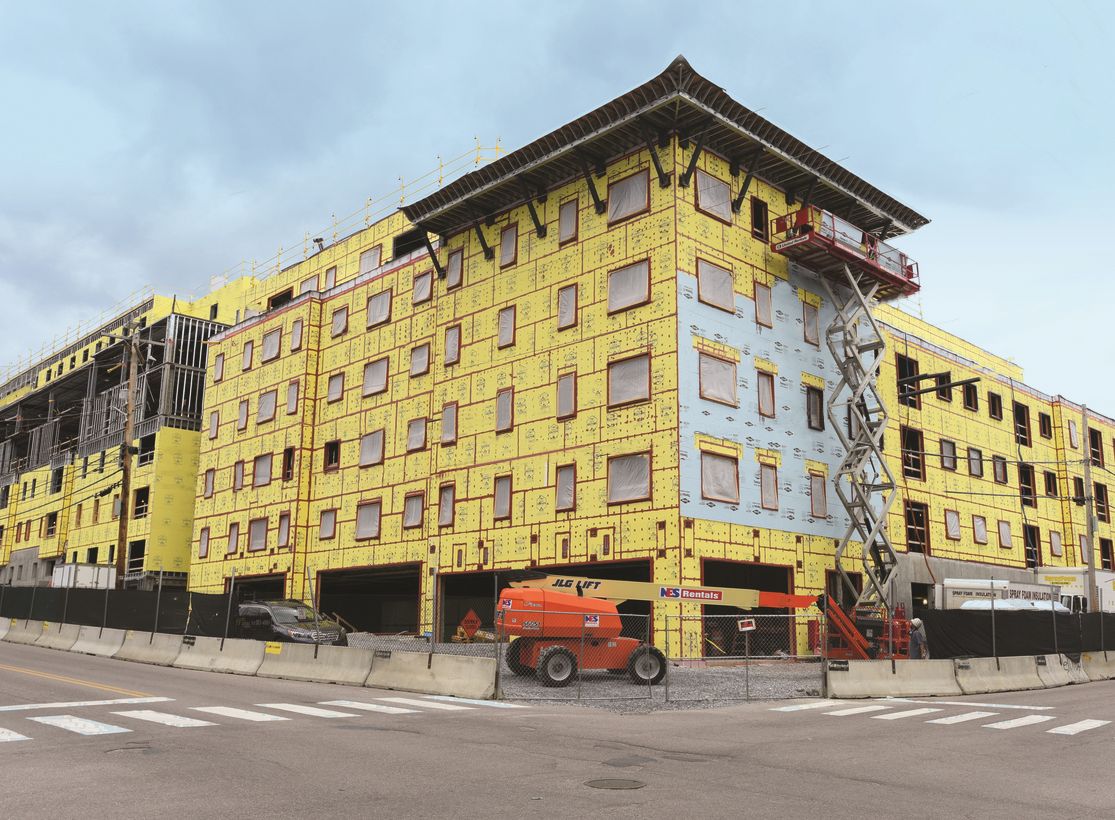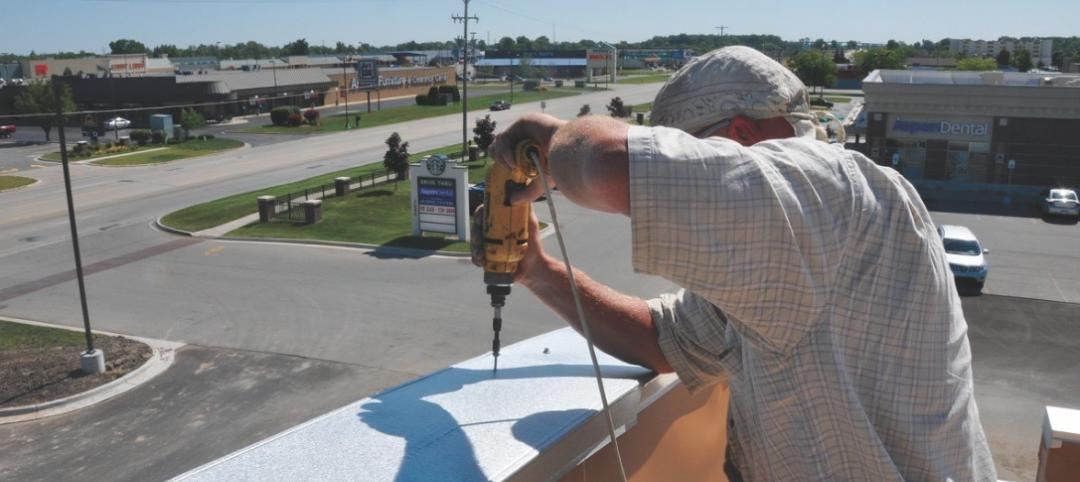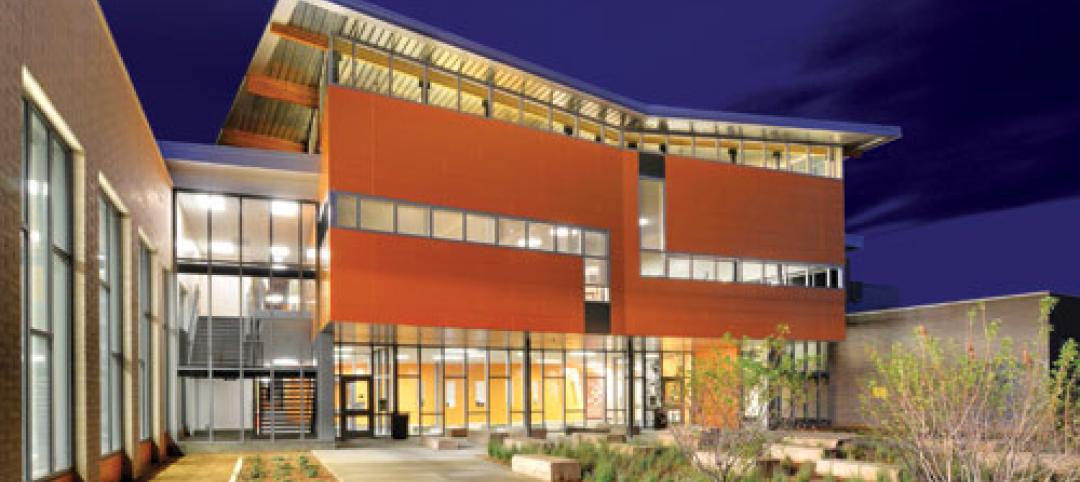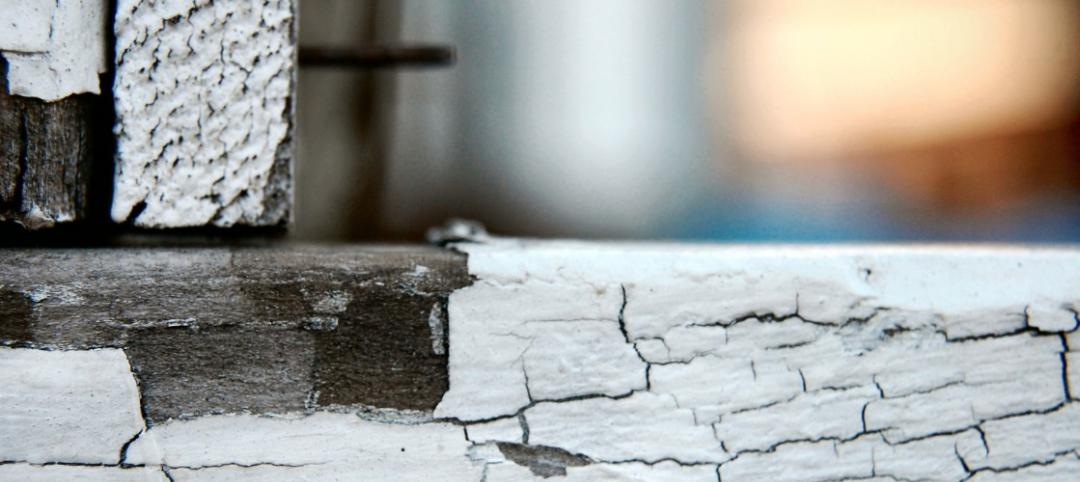On paper, it must have seemed like a perfect match. Champlain College needed more student housing, and in the middle of downtown Burlington, Vermont, there sat an aging, city-owned parking lot, ripe for replacement with a modern apartment building. The only problem was the central location. Overhead power lines, and buildings in close proximity meant that construction would have to occur in close quarters — a difficulty compounded by the building’s design, which includes 600 exterior windows.
General contractor HP Cummings Construction Company and sub-contractor Optimum Building Systems & Management, Inc. were staring down a difficult, time-consuming job, until GP Gypsum representative Kurt Ouellette proposed a solution: the DensElement™ Barrier System with AquaKOR™ Technology. Its proprietary formulation integrates the gypsum core and fiberglass mat into a hydrophobic, monolithic surface that blocks bulk water while allowing vapor to pass through. This unique design requires no separate WRB-AB, which simplifies installation — a major benefit when job site space is minimal.
“DensElement™ Barrier System streamlined and reduced installation time needed for sheathing and WRB-AB,” said Michael Hulbert, Senior Project Manager at HP Cummings Construction Company.
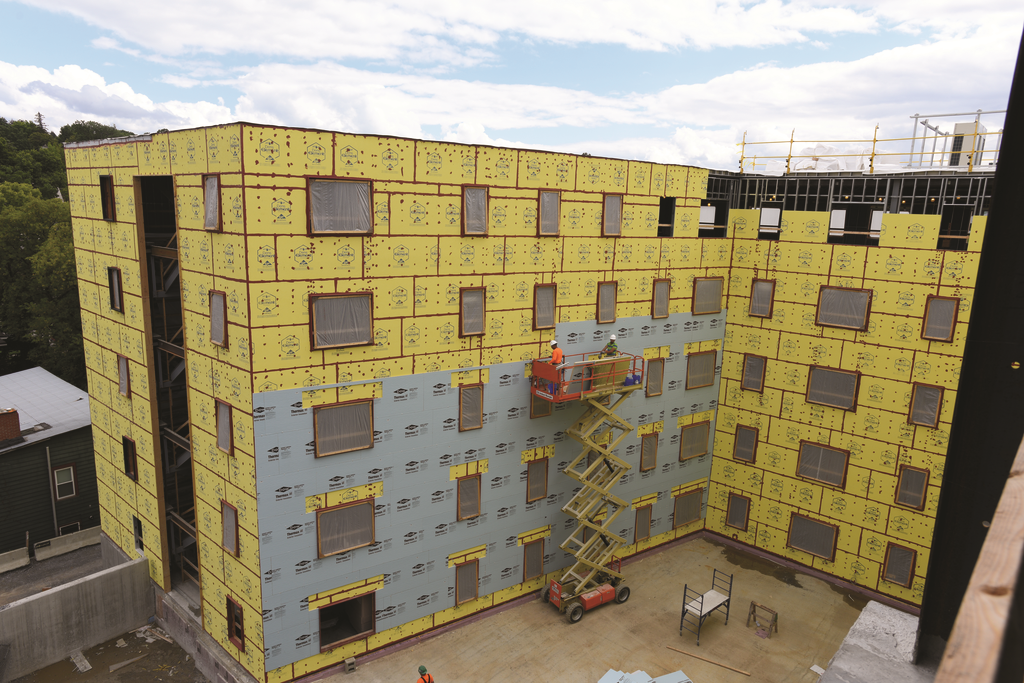
Brian Kelly, Estimator and Project Manager at Optimum Building Systems LLC, praised PROSOCO R-Guard® FastFlash® liquid flashing, which proved effective in sealing around all 600 exterior windows. “The general contractor felt the FastFlash® was easier to visually inspect versus peel-and-stick,” Kelly stated. “It conforms to the corners on openings and directional change with the wood bucks in the windows.”
According to Kelly, utilizing the DensElement™ Barrier System likely shaved two months off the installation. “It’s one and done,” he noted. “It’s a real time-saver, with cost savings to the owner and to everyone. We saved a significant amount of money, the owner was very happy, and they achieved what they wanted to achieve at a lower cost. It was a win-win for everyone.”
When it’s completed in the summer of 2018, the Eagle’s Landing Apartments will be the latest addition to the 140-year history of Champlain College. As a home for students who will grow into the future leaders of the world, it’s only fitting that construction of this building would demand modern ideas and novel technologies like the DensElement™ Barrier System.
To learn more about the DensElement™ Barrier System, visit DensElement.com.
Related Stories
| Jun 13, 2017
Accelerate Live! talk: Next-gen materials for the built environment, Blaine Brownell, Transmaterial
Architect and materials guru Blaine Brownell reveals emerging trends and applications that are transforming the technological capacity, environmental performance, and design potential of architecture.
Sponsored | Moisture Control/Building Envelope | Dec 13, 2016
Understanding rainscreen wall systems
The basic idea of a rainscreen is to have an exterior surface – a cladding layer - that breaks the force of sideways, wind-driven water movement, so that any water which gets through the small breaches in the surface has lost its momentum.
| Jan 28, 2016
AIA CES class: The rainscreen approach to a better building envelope
Building envelope expert Bradley Carmichael of Hoffmann Architects explains how rainscreen wall systems work and evaluates the effectiveness of various rain-control methods, including mass walls, perfect barriers, and masonry veneers. This AIA/CES class is worth 1.0 learning unit.
Brick and Masonry | Feb 5, 2015
3D-printed 'cool brick' may provide cooling solution for arid locations
Cool Brick is made of porous ceramic bricks set in mortar. The bricks absorb water, which cools the air as it passes through the unit.
| Mar 20, 2014
Common EIFS failures, and how to prevent them
Poor workmanship, impact damage, building movement, and incompatible or unsound substrate are among the major culprits of EIFS problems.
| Mar 4, 2014
How EIFS came to America
Design experts from Hoffmann Architects offer a brief history of exterior insulation and finish systems in the U.S.
| Sep 20, 2013
Perimeter roof edge: The first line of defense in a wind event [AIA course]
Aside from the roof membrane itself, the perimeter roof edge is the most critical component of the roofing system. As such, it warrants more scrutiny when designing a roof system.
| Sep 15, 2013
How to build a rainscreen using fiber cement panels - AIA/CEU course
This course will review the cause and effects of moisture intrusion and explain how fiber cement panels can be used as a rain screen to reduce moisture build-up, rotting interior walls, and mold growth.
| May 14, 2013
Paints and coatings: The latest trends in sustainability
When it comes to durability, a 50-year building design ideally should include 50-year coatings. Many building products consume substantial amounts of energy, water, and petrochemicals during manufacture, but they can make up for it in the operations phase. The same should be expected from architectural coatings.
| May 3, 2013
5 common failures in paints and coatings
As experienced designers, contractors, and owners know, most paint and coating problems are correctable, but some are especially stubborn to address. Here is a partial compendium of typical failure modes and methods for addressing the problem.


